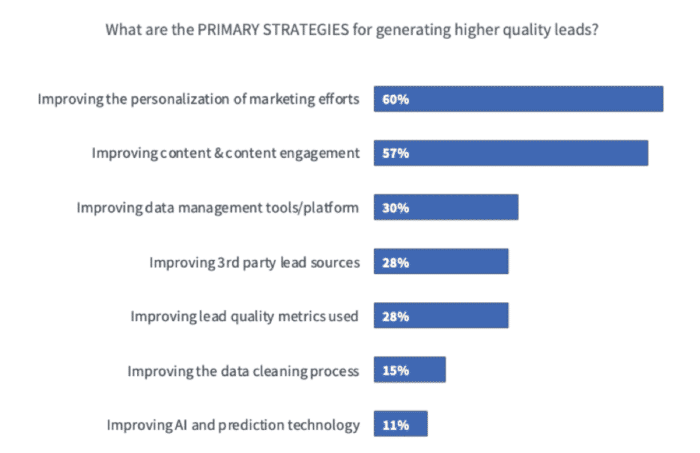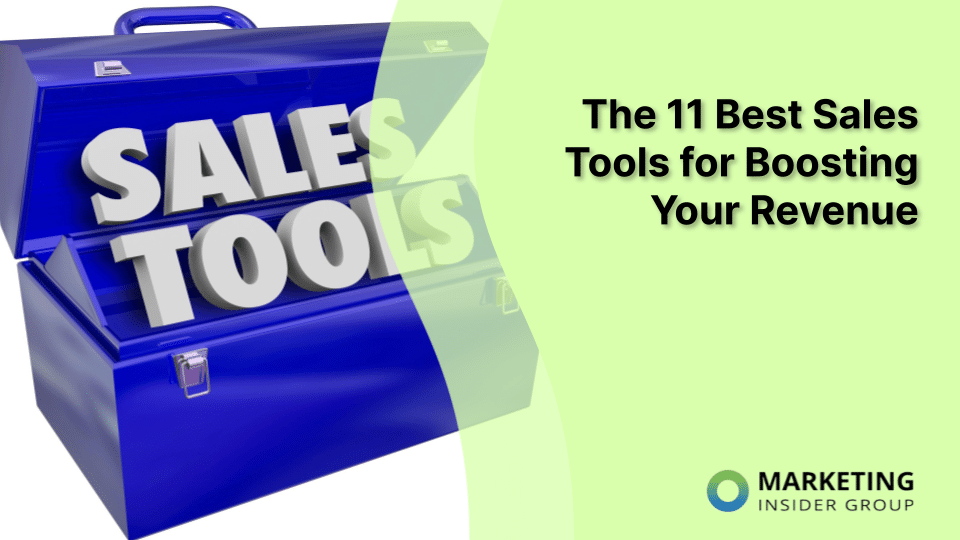
Double Your Revenue with Intent Data and Personal ABM
Bombora, 6sense, and other “intent data” platforms are helping marketing teams evolve ABM where there are less forms, less spam, and less cold calls. They are promising to help sales and marketing teams avoid:
- Wasting time with prospects that will never become customers as they will help you focus time, money, and resources on companies that are showing real interest and intent in investing in a particular solution to fix their challenges.
- Sending emails without knowing what the accounts care about based on keyword research, what the key personas are, and what stage they’re at in the buying journey.
- Unnecessary calls to prospects that haven’t shown that they are “in-market.”
- Email and live conversations that do not articulate the context for why the call was made or an email sent.
The fact is that intent data can help sales and marketing deliver useful content and messaging that is tailored for what “buyers” are searching for and wanting at that moment in time vs. serving generic thought leadership pieces.
However, I believe that this is only the starting point for the next generation of ABM, where sales and marketing are focused on the human interaction with buyers at target accounts.

Unless we evolve ABM even further, sales and marketing will continue to find breakdowns in the pipeline, and they will still have missed opportunities to create sales cycles and revenue with accounts that match their ideal, in-market customer profile.
We need to take the shift off MQLs and how many accounts are in the pipeline and put a greater focus on creating a more personal connection. That’s how you can double and even triple your revenue without adding more accounts to the pipeline.
The Need for More Personal Account-Based Marketing
While sales and marketing may be delivering a personalized experience – it’s still not a “personal” experience that’s tailored specifically for a particular company and its buyers. We found that companies get “stuck” or they “leave the funnel” because they didn’t see personal relevance, a real differentiation, or a reason to prioritize your solution over other investments.
You can’t have a personal experience when sales and marketing clump together ideal, in-market accounts that are in the same buying stage and deliver campaign/templated content and messaging based on general assumptions and pain points. Most of this content and messaging is focused on:
- “Large” industry shifts that are happening and what your solution offers that every potential customer may be trying to achieve.
- Ways prospects, in general, continue to struggle to evolve to that shift.
- General challenges that prospects face because of those struggles.
- Ways your solution helps customers meet the general challenges.
- Differentiators which usually comes down to features and benefits that, in most cases, your prospects do not even care about – only 14% of so-called unique benefits are actually perceived by customers as unique and beneficial. It’s not focused on how account-specific gaps are uniquely filled.
There is nothing personal about the messaging framework that sales and marketing are working with. Sales and marketing are speaking “at” accounts vs. “to” accounts and the human buyers within those accounts. With those accounts that no longer engage with your timely sales and marketing campaigns, you need to:
- Make a stronger connection between your insight and the potential customer.
- Challenge their specific assumptions and speak to their world in ways they haven’t thought of or appreciated.
- Deliver the data, information, and insight that will reframe how they think about their business – and how they operate or compete.
- Change or build on what they know in ways they couldn’t have discovered on their own.
- Create an a-ha moment
No matter how timely the information is – if it doesn’t speak to the buyers and their specific situation, it’s irrelevant. I believe that the next generation of ABM will be about supplementing personalized experiences with a “more personal experience” that is focused on specific accounts that sales and marketing want to win, protect, or expand.
The Need to Go Beyond Intent Data to Make the Personal Connection
You cannot make it personal unless you dig deeper beyond intent data and figure out:
- “Why” is there intention in the first place, and specifically, what is their million-dollar headache?
- What is going on in the organization, and what is happening with the divisions, operations, customers, and P&L?
- What are the business objectives, and what are the account-specific/competitor-specific gaps that will impact success? What are the gaps and challenges that stuck accounts are facing that they are unaware of – or they are under-estimating the magnitude of the issue and personal impacts?
- What are the personal wants and needs of each buyer – what are they looking for personally?
Intent is the perfect place to start because you know there’s real interest. But, that’s only the starting point; otherwise, you’ll be talking “at” accounts vs. “to” accounts and to the human buyers within those accounts.
The Need to Get Personal Across All Channels (Including Social)
Once you identify the “right in-market” accounts and go beyond “intent data” with those “perfect” accounts that are no longer engaging, you need to make sure that profiles, content, and messaging speak to the selling conversations you want with that account. You need to get personal across all channels, including LinkedIn, where you can engage 1-to-1 with key decision-makers and influencers.
If you look at most sales teams’ profiles, you’ll see resumes that tout sales accomplishments, or you will see a ton of facts and features about their company, their products, and their solutions. Or, you’ll see messaging around “general pain points” and “benefits” and no tailoring to a prospects’ specific needs and objectives. There are no “origin” stories that show prospects how sales is relevant to them specifically and no “relevant” customer stories that will reframe the prospects’ thoughts and ideas. And, connection invites and nurture messages are all about pushing value propositions as sales is playing a numbers game. They are looking up key accounts on LinkedIn, finding the decision-makers they need to reach out to – and then they send templated “persona” based messages. To drive a “personal connection on LinkedIn,” you need industry, company, rank/role, individual, and customer relevance.
Personal ABM Works Hand-in-Hand with Your Intent-Data-Driven Campaigns
While we talk about the need to get personal, you have to understand that it’s not scalable. It requires a great investment in time, money, and resources, so it should only be reserved for those “whale” accounts that:
- Stop engaging with your sales and marketing campaigns.
- Match your “most” ideal customer profile
- Would provide your firm with the greatest revenue growth if only you can create a buying vision.

While personal account-based marketing approaches should only be reserved for those accounts that would be part of the 20% of customers that bring 80% of your revenue, the impacts will be far-reaching. Because you focus on “personal interactions,” sales and marketing will need to be integrated. Sales and marketing will both be accountable for revenue. Marketing will further increase their influence over revenue – while sales will stop the “unresponsiveness” trend that has been happening for the last 2 to 3 years. C-19 only exacerbated the unresponsiveness.
More importantly, you’ll stop the guesswork. You’ll have a proof of concept for the messaging and content that drives certain types of sales and marketing conversations. You’ll see a direct impact on the sales cycle and revenue, and you’ll be able to use these insights to optimize your intent-data-driven ABM campaigns.






